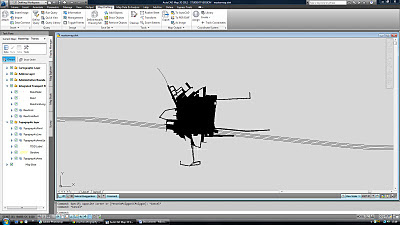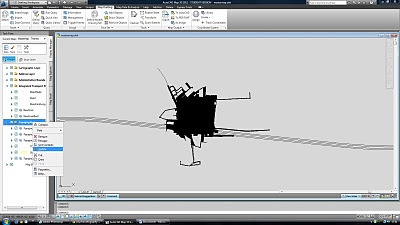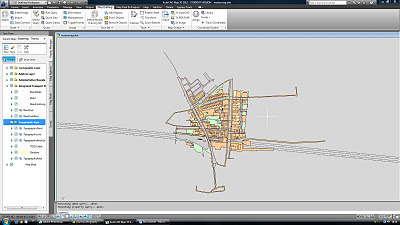They paraded Estelle's offspring before her, as she lounged languidly on the chaise longue upon the veranda. Wearing a dressing gown at sunset and smoking a pungent cigarello in ebony holder, Estelle effortlessly maintained an air of louche disinterest as- one after another- each of her children presented her with their tribute.
Son number one... a nameless no-one. Conceived in an innocent passion- all innocence and unguardedness- he was not remembered fondly. Estelle perceived in his big, dead grey eyes the same naivety that had led to his creation reflecting off her own face, and was ever embarrassed by him. She had loved him in her youth, but as she hardened she grew to hate him and he never adjusted well. Simple and unsophisticated and ignored by all but Estelle's most fervent followers, son-number-one was the family joke.
Son number two- Maurice- was confident and assured and used to the kind of life son number one would never know. He offered his mother his hand by way of greeting. First, that hand was slapped. Then his face. He cried lke a baby to his entourage, though he was a grown man. They complained querulously until Estelle's protectors whisked them away.
Estelle was sick of the sight of hm. When he was a baby, everyone had told he how perfect he was. She swelled with pride, and out popped a third child, Vincent. Though still held in high regard, he was not held in such high esteem as Maurice, though at his birth she had loved him just as much.
"But look what happens to them..." she grumbled inaudibly, throwing the single rose her lone son proffered back at him. He allowed a slow smirk to spread as he regarded the red blood on Estelle's hand, drawn by its thorns. He'd turned out to be a clever bastard.
As a young woman with two sons attracting high praise indeed, it was only natural that Estelle should want to try for a girl. She felt ready, but contemporaries discouraged her: "For why? when you have such fine sons!" Heedlessly she proceeded.
The pregnancy was... tricky. The birth was unpleasant. First the midwife was called. Then the physician. Then the surgeon. Together they had to cut the baby out. Lightweight and gasping for air, she nearly didn't make it. Behind mother's back, as the infant stumbled through her early years, there were many whispers that it may have been better if she hadn't.
Happily hopping forward, the wretched invalid laid a few lillies, a chicken kebab and some copper coins at her feet.
"Happy birthday, mother."
Estelle spat in her face. The invalid smiled- it was more than she could have hoped for.
Then came Bruno. Heavy set and good-natured, he was born a number of years after the daughter. After that trauma, it was a long time before Estelle went back to the bedroom with anything but sleep on her mind. Eventually she met a kind man- sensible and money-minded- and he coaxed that desire out of her. In time, Bruno followed. Not in any way the equal of his elder brothers, he was still held up as a perfectly decent figure of manhood. with alarming regularity he was joined by an increasingly homogeneous sequence of younger brothers.
One by one they marched up to kiss their mother and offer her their precious tokens. Each one produced a bag of gold coins, though of steadily decreasing size. She could not remember their names.
The presentation complete, she turned to address her eldest sons once more.
""What do you bring me, eldest son"
"Some weeds."
"And you, second born?"
He was still smarting from the slap and did not meet her eye as he handed over the deeds to the villa in Andalusia, the chalet in the alps, the cottage by Loch Ness and the flat in Knightsbridge.
"My third-born. What do you have for me?"
Vincent protested that he'd paid all the servants and the legal bills and the gambling debts in Monte Carlo. Estelle sneered. With an angry wave her right hand, the servants swiftly descended upon her brood and led off the grounds.
Estelle watched them trudge noiselessly down the path towards the gates. Quite unexpectedly Estelle felt a sudden pang of guilt: did she not owe her offspring her love? But she had given them everything: she was an old woman now, no matter what they gave to her, she would never regain the youth they had taken.
Estelle sighed before pulling herself together. She knocked back a tumbler of pastis and rang the bell for service.
"Bring me my baby!"
Estelle's new hand maid (who looked the same as the last one but was Czech not Slovak) curtsied and scurried from the veranda like a little grey mouse. She sighed again.
The moors were beautiful at sunset, especially with pastis and fine cigars and piles of gold coins. After her last husband died- that sensible, money-minded man- there were no Brunos left in her. She fled into the comforting embrace of obscurity. Estelle withdrew from society. Her old friends and colleagues conversed with her only through her children, but they never had anything new to say.
Estelle had always longed for a daughter. Doctors and midwives and physicians warned her she was too old, that she didn't have it in her.
"Besides!" they would explain, "you have a daughter- Macey! Okay, she's a spastic, but she's yours! And remember her birth- would you really want to go through all that again?"
Estelle had been firm:
"I know what I did wrong last time."
A little grey mouse pushed a silver cross into the red glare before scuttling back into the shadows, all frantic and anxious. Estelle embraced her newborn, wrapped in Egyptian cotton, regarding her face:
"You won't get old. You're as well as can be. You're brothers and sister came out fully formed. Why should you be any different?"
Estelle's heart melted when her child's wooden lips mouthed "mama!" and- brushing the wire wool back from the little one's scalp- she drew the child to her breast.
"Mama!" It yelped, excitedly, before suckling at Estelle's wrinkled teat. Estelle watched her child proudly. So much had gone into her creation. Every single detail was perfect. Her critics might remark at how contrived she was, fashioned from teak not flesh. They might sneer that only a mother could love her. But as Estelle stared into the fine-set emeralds surrounding her baby's pupils, Estelle felt that love, truly, and for the first time. The gloaming light was fading, the stars were out, the other children were long gone and no-one stirred.
"I'm not going to share you with anyone else."
Friday, 16 December 2011
School's Out- for Christmas
So anyway, thought I'd post the two Theme Project vids I did for the POS and Urbanisation assignments... looking back, really would like to re-edit them but have to draw the line under that one for now. Let me know what you think!
Thanks to the Advanced Planting design group for letting me sit in on their crit today. Some really impressive work on show- still glad I took Art & Context though, found it a bit weird that their was so much critique of spatial/ circulation and hard materials usage in what I thought was a a planting module... still, some great schemes and evidence of some seriously late nights. Well done everyone.
Oh, thanks to Duncan Goodwin for letting me drink all his win and eat all his cheese. I recommend the pate.
URBANISATION:
POS:
Friday, 2 December 2011
Over Your Cities Grass Will Grow Featurette (2011) HD Movie
Watched Over your Cities Grass Will Grow, a documentary concerning Anselm Kiefer's landscape in the South of France. The above video is an good summary of the film by its maker, Sophie Fiennes, featuring footage from the feature.
Friday, 11 November 2011
rambling man part II
Thursday, 13 October 2011
Gillett Square- Art and Context in Urban Spaces/ Places

.



 The social acceptability of street drinking (or lack thereof) is an interesting consideration in the use and design of public space. The gentlemen in the image above might be considered negative or undesirable, but are certainly enjoying a bit of landscape architecture. Public perception does tend to hinge on valued judgements concerning social class: ultimately, the two men above ware no different to a mature couple enjoying champagne from their Fortnum and Mason hamper on Parliament Hill.
The social acceptability of street drinking (or lack thereof) is an interesting consideration in the use and design of public space. The gentlemen in the image above might be considered negative or undesirable, but are certainly enjoying a bit of landscape architecture. Public perception does tend to hinge on valued judgements concerning social class: ultimately, the two men above ware no different to a mature couple enjoying champagne from their Fortnum and Mason hamper on Parliament Hill. A group of four or five skateboarders, aged 25-40 had monopolised the centre of the square, skating around an upturned plastic crate. It was a constant ballet, with the skaters using the raised deck in the west as a kind of launch platform, rolling around in wide circles observed by other users of the site.
A group of four or five skateboarders, aged 25-40 had monopolised the centre of the square, skating around an upturned plastic crate. It was a constant ballet, with the skaters using the raised deck in the west as a kind of launch platform, rolling around in wide circles observed by other users of the site.










 I'm interested in the idea of everyday life being a performance, and unfolding ballet or play exercise by members of the public, with the landscape operating as their stage. As I explore this site further, i'd like to look into graphic scoring and notation to document how people use elements of the landscape and how their actions define the space or create places. I'm also keen to look into how sound and acoustics define an area by providing the soundtrack, how this can be scored.
I'm interested in the idea of everyday life being a performance, and unfolding ballet or play exercise by members of the public, with the landscape operating as their stage. As I explore this site further, i'd like to look into graphic scoring and notation to document how people use elements of the landscape and how their actions define the space or create places. I'm also keen to look into how sound and acoustics define an area by providing the soundtrack, how this can be scored.Gillett Square
A public space animated by the creativity of the surrounding community
Formally opened in November 2006, Gillett Square is a simple, hardwearing and flexible urban space for Dalston. It is bordered by the Dalston Culture House - home of the Vortex Jazz Club, the Bradbury Street Workspace and a number of small retail units. These have been developed and are managed by Hackney Co-operative Developments. On its northern side there is a public car park.
The square has been developed by the Gillett Square Partnership, which currently comprises Hackney Co-operative Developments, Groundwork East London, Hackney Council and Design for London. This partnership operates as an overarching strategic body for all aspects of the square’s function and development. Whilst this space is owned and maintained by London Borough of Hackney, its cultural and enterprise uses are the responsibility of the ‘Gillett Squared’ management group led by Hackney Co-operative Developments as its public entertainment license holder.
Gillett Square is a genuine community asset. It provides an accessible outlet for this area’s abundant creative talents and energy, promotes social cohesion, invites cultural exchange and education, and presents market opportunities. The process behind the building of Gillett Square, its current usage and prospects, are the foundations upon which a remarkable transformation is taking place in Dalston.
"Our ambition to take our programme outside the Centre's walls to audiences in the east reached new heights this year...with Hackney Co-operative Development's Gillett Squared project."
Thursday, 6 October 2011
Importing OS Mastermap data into Autocad Map 3d



Select “import” and select the GZ file you’ve downloaded from digimap. A dialogue box will appear listing all the ;layers that are going to imported into the drawing.
It is important to ensure you create object data” by clicking on the data column and selecting “create object data” in the attribute data dialogue box. This allows you to update the groups when it comes to rendering the drawing later.




Wednesday, 5 October 2011
Urban Development Project

Sunday, 2 October 2011
space and time



Tuesday, 20 September 2011
WALKABOUT- diploma/MA induction/ EVA CASTRO
Poverty has driven me further into education... there is clearly something wrong with the British economy. Nevertheless, today I met my comrades on the diploma/ MA/ MSc programme and wandered around London with Tom Turner, Robert Holden and Benz Kotzen
In summary:
We walked around London. Flexible paving is better than rigid. Purbeck limestone was a common paving material in Georgian times.
Lawyers are rich.
If a bit of landscaping looks appealing it's Thatcherite plot to make you buy an over-priced riverside development.
Models are pretty but probably not as clever as landscape architects...
Interesting that we finished our round tour of London at Somerset House neck deep in fashion...
ROBERT HOLDEN:
"I don't like fashion people"
ARCHITECTURAL ASSOCIATION LONDON:
"Sure, right... did we mention Eva Castro?"

(I plan to wear this as a t-shirt,complete with Estonian script)
Eva Castro IS hot....
(so hot right now)
(London fashion week)
(uh.. landscape urbanism?)

Yup. Urban planning, anyone?
Tuesday, 13 September 2011
CAME
weallcame.blogspot.com
Please follow me and tell your friends who like their music loud, discordant and fronted by a woman half singing in swedish
Monday, 5 September 2011
noise rock saved my summer
Huzzah.
BO NINGEN
*in case there are any SY nerds reading this I am aware of the first, eponymous EP they released in 1981 and I know they consider it to be their debut album but... it's just not really an album, is it?Discuss below.
Sunday, 24 July 2011
1:50 planting plan detail area 1

Saturday, 23 July 2011
amy winehouse
estelle the novelist

